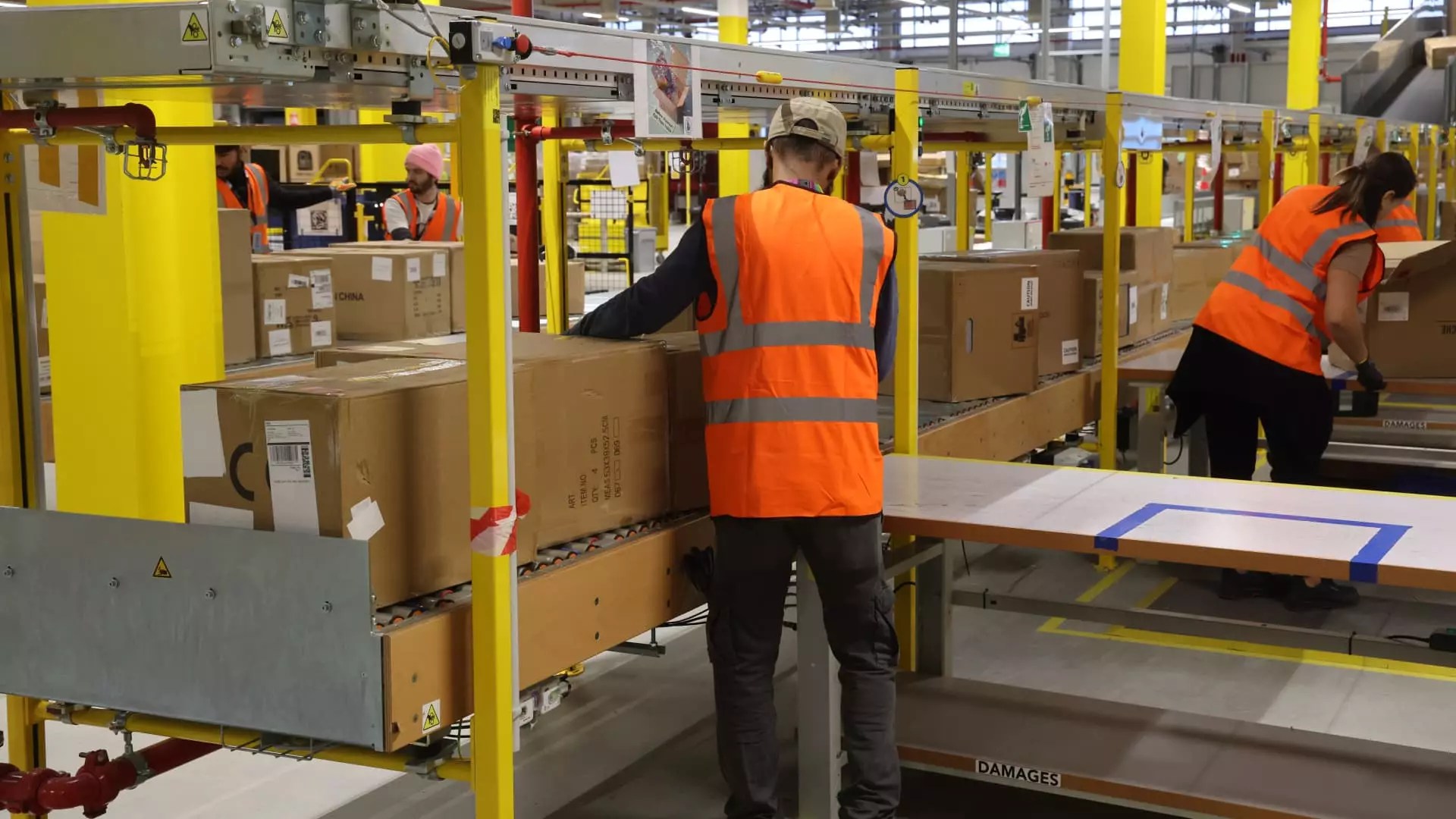In recent years, corporations like Amazon have positioned automation as a symbol of innovation and efficiency. The announcement of its millionth robot and the integration of advanced AI models underscore the narrative of progress, but beneath this shiny veneer lies a troubling contradiction. While these technological marvels promise faster, cheaper logistics, they do so at a profound cost to the human workforce. The supposed benefits of increased productivity are often touted as mutually exclusive from the realities many workers face: job insecurity, wage stagnation, and a future where human labor is increasingly devalued.
The narrative promoted by Amazon and similar giants paints automation as complementary to human effort, claiming that robots handle heavy lifting and repetitive tasks to free employees for more skilled roles. However, this rhetoric ignores a simple truth: automation’s primary motive is profit maximization at the expense of employment stability. It’s a strategic shift that prioritizes shareholder returns over community well-being, creating an illusion of innovation while contributing to a widening economic divide. The boosterism around AI-driven efficiency often conceals the human toll—fewer jobs, lower job security, and a workforce increasingly marginalized.
The Myth of Job Creation in the Wake of Automation
Proponents argue that new roles will emerge within the tech sectors to offset job losses, citing Amazon’s recent hiring in engineering and maintenance for their “next-generation” centers. Yet, this perspective is fundamentally flawed if it ignores the broader reality: the new jobs tend to require specialized skills that many displaced workers do not possess, deepening inequality and alienating large segments of the population. The promise of “upskilling” as a pathway out of unemployment often rings hollow, especially when the pace of technological change surpasses the ability of workers to adapt.
Moreover, claims that automation will create “more opportunities” are increasingly disconnected from the data. Reports show that despite these technological investments, layoffs continue unabated; over 150,000 tech workers were laid off last year alone. These figures do not account for the steady attrition of blue-collar jobs, which are the backbone of many communities. Automation’s true impact is economic contraction in working-class sectors, as companies streamline operations that once provided stable livelihoods into semi-automated processes that require minimal human oversight. The narrative of job growth in new sectors fails to account for the economic dislocation suffered by millions, making automation’s benefits appear as a selective boon rather than a universal good.
Automation’s Ethical and Social Dilemmas
Beyond the economic implications, there is a fundamental moral question about the direction in which our society is headed. The embrace of AI and robotics reflects a broader trend toward valuing technological efficiency over human dignity and societal stability. While AI may enhance productivity, it often does so at the expense of ethical considerations regarding employment and community well-being. Companies like Amazon, and indeed the tech industry at large, seem to view automation as an inevitable march—a force of nature—rather than a moral challenge requiring careful regulation.
The subtle narrative being constructed is one of inevitable progress, but it obfuscates the fact that decision-makers are actively choosing profit over people. This stance ignores the social capital lost when communities are hollowed out and families are disrupted by relentless layoffs. The promise of a high-tech future cannot be divorced from the moral responsibility to ensure that technological advancements serve the common good, not just corporate interests.
Center-Left Perspectives: Balancing Innovation with Responsibility
From a centrist liberal perspective, there is an urgent need to reevaluate the priorities guiding technological advancement. Innovation should not be an excuse for unchecked exploitation or societal neglect. Policymakers and corporations alike must recognize that the real measure of progress is how well these innovations serve human needs rather than corporate profits. Regulation, taxation, and social safety nets must adapt to ensure that the benefits of AI and automation are shared broadly, not hoarded by a few.
It is imperative to shift the narrative away from dismissing displaced workers as casualties of inevitable progress and toward a model of technological development rooted in fairness and social responsibility. Investing in retraining programs, safeguarding employment rights, and designing AI that complement, rather than replace, human labor are essential steps forward. Without these efforts, automation risks deepening social divides, eroding communities, and turning the promise of technological progress into a source of societal harm.
In the end, the unchecked pursuit of automation as an end in itself is a perilous path. Progress must be anchored in the values of fairness, inclusion, and community resilience. Without intentional oversight, AI-driven efficiency will reinforce systemic inequalities, leaving behind those who built the economy in the first place. The future of work demands a conscious balance—where innovation uplifts rather than displaces, and technology becomes a tool for human empowerment, not economic exclusion.


Leave a Reply